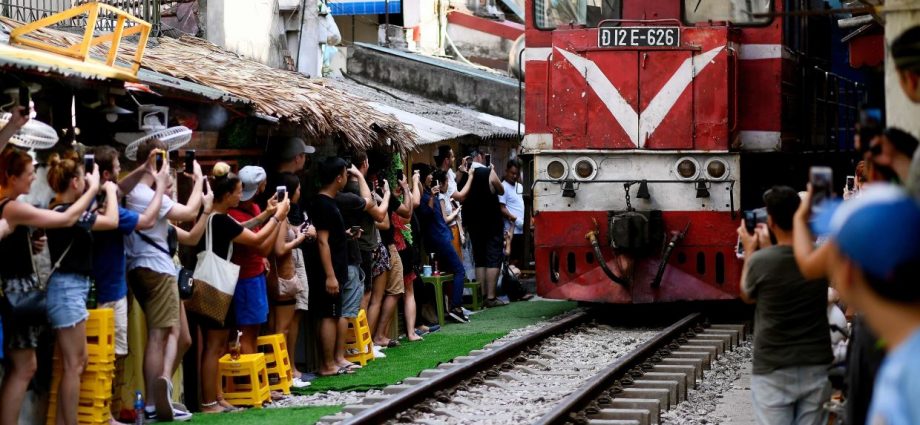
Nearly three years after Vietnamese authorities shuttered cafés along Hanoi’s famous “Train Street” and banned selfie-snapping tourists from visiting, vendors have cautiously returned in recent months – although nobody knows how long the area will remain open.
On the approximately 50-metre thoroughfare in central Hanoi, locomotives thunder down a railway line that runs perilously close to residential buildings, many of which have been turned into cafés, bars and souvenir shops.
Christina and Paul, two 29-year-old tourists from Austria, said a friend recently told them about the unusual spot, inspiring them to visit. “We didn’t know when the train would come,” Christina told dpa, “we went upstairs for a beer, and then luckily the train rushed by.”
The thrill of watching trains rumble past mere inches away – or posing for Instagram shots on the tracks – attracted hundreds of thousands of visitors in 2018 and 2019, turning the area into a social media hotspot.
But in October 2019, the Vietnamese authorities abruptly closed the area to tourists, citing overcrowding and security concerns.
The gradual reopening of Train Street comes as Vietnam seeks to boost tourism again after borders were closed throughout the Covid-19 pandemic. In 2019, the South-East Asian nation welcomed 18 million international arrivals, whereas in the first half of 2022, only 602,000 foreign tourists entered the country.
According to Nguyen Van Long, a 51-year-old café owner, the government hasn’t officially allowed the area to reopen, but “three or four months ago, we reopened the cafés ourselves,” he says, “and now tourist visits are rising again.”
“We do worry that the government will close the area again,” he adds, “but after Covid, we struggled. The people here have to make a living, we have to go on.”
The train route, which crosses the Dien Bien Phu road at one end and the Tran Phu road at the other, dates back to French colonial times: it was built in 1902, but still plays an important role for local and foreign travellers today. – dpa

